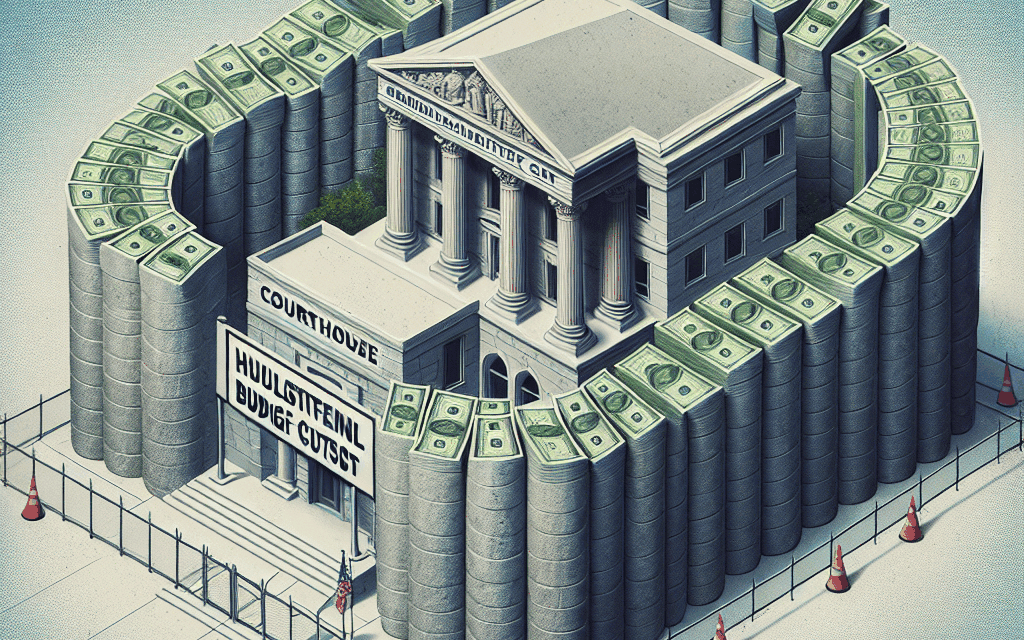Court Blocks Trump Administration’s $11B Cuts to Public Health Funding
The Trump administration’s proposed cuts to public health funding have been a contentious issue, drawing significant attention from various stakeholders, including health professionals, lawmakers, and the general public. In a landmark decision, a federal court recently blocked these cuts, which amounted to approximately $11 billion. This article delves into the implications of this ruling, the context surrounding the proposed cuts, and the broader impact on public health in the United States.
Understanding the Proposed Cuts
The Trump administration’s budget proposal for fiscal year 2020 included significant reductions to various public health programs. These cuts were primarily aimed at programs under the Department of Health and Human Services (HHS), including the Centers for Disease Control and Prevention (CDC), the National Institutes of Health (NIH), and the Health Resources and Services Administration (HRSA).
Key areas targeted for cuts included:
- CDC Funding: The CDC faced a proposed reduction of over $1 billion, which would severely impact its ability to respond to public health emergencies, conduct disease surveillance, and support state and local health departments.
- NIH Research Grants: The NIH, a critical source of funding for medical research, was set to lose approximately $1.5 billion, jeopardizing ongoing studies and the development of new treatments.
- Maternal and Child Health Programs: Programs aimed at improving maternal and child health were also on the chopping block, with cuts that could affect prenatal care and childhood vaccinations.
These proposed cuts were justified by the administration as necessary for reducing the federal deficit. However, critics argued that such reductions would undermine public health infrastructure and lead to long-term negative consequences for health outcomes across the nation.
The Legal Challenge
In response to the proposed cuts, several public health organizations, advocacy groups, and state governments filed lawsuits against the Trump administration. They argued that the cuts violated federal law and would disproportionately harm vulnerable populations, including low-income families, children, and the elderly.
The legal arguments centered around several key points:
- Violation of the Public Health Service Act: Plaintiffs contended that the proposed cuts violated the Public Health Service Act, which mandates that the federal government maintain adequate funding for public health programs.
- Impact on Vulnerable Populations: The lawsuits highlighted how the cuts would disproportionately affect marginalized communities, exacerbating existing health disparities.
- Public Health Emergency Preparedness: The plaintiffs argued that reducing funding for the CDC and other agencies would hinder the nation’s ability to respond to public health emergencies, such as pandemics and natural disasters.
After months of legal proceedings, the court ruled in favor of the plaintiffs, blocking the proposed cuts. The ruling emphasized the importance of maintaining robust public health funding to protect the health and well-being of all Americans.
Implications of the Court’s Ruling
The court’s decision to block the Trump administration’s cuts to public health funding has far-reaching implications for the future of public health in the United States. Here are some of the most significant outcomes:
- Restoration of Funding: The ruling ensures that critical public health programs will continue to receive necessary funding, allowing agencies like the CDC and NIH to maintain their operations and support vital research.
- Strengthening Public Health Infrastructure: With funding secured, state and local health departments can enhance their capacity to respond to health crises, conduct disease surveillance, and implement preventive measures.
- Protection of Vulnerable Populations: The decision is particularly significant for low-income families and marginalized communities who rely on public health programs for access to healthcare services, vaccinations, and maternal and child health support.
Moreover, the ruling sends a strong message about the importance of public health funding in safeguarding the nation’s health. It underscores the need for a collaborative approach to public health that prioritizes prevention, research, and equitable access to healthcare services.
Public Health Funding: A Historical Perspective
To fully understand the implications of the court’s ruling, it is essential to consider the historical context of public health funding in the United States. Over the years, public health funding has fluctuated based on political priorities, economic conditions, and emerging health challenges.
Key historical milestones include:
- The Establishment of the CDC (1946): The CDC was created in response to the need for a coordinated public health response to infectious diseases, particularly malaria. Over the decades, its role has expanded to address a wide range of health issues.
- The War on Poverty (1960s): This initiative led to increased funding for public health programs aimed at improving health outcomes for low-income populations, including the establishment of community health centers.
- The HIV/AIDS Epidemic (1980s): The emergence of the HIV/AIDS crisis prompted significant federal investment in research, prevention, and treatment programs, highlighting the importance of public health funding in addressing urgent health challenges.
Despite these advancements, public health funding has often been subject to political whims. The recent proposed cuts by the Trump administration marked a significant departure from the historical commitment to public health funding, raising concerns about the future of health programs in the U.S.
The Future of Public Health Funding
In light of the court’s ruling, the future of public health funding in the United States appears more secure, at least in the short term. However, several challenges remain that could impact funding levels and public health initiatives moving forward.
Key considerations for the future include:
- Political Landscape: The political climate in Washington, D.C., will play a crucial role in determining future funding levels for public health programs. Advocacy efforts will be essential to ensure that public health remains a priority for lawmakers.
- Emerging Health Threats: The ongoing threat of infectious diseases, such as COVID-19, highlights the need for robust public health funding to prepare for and respond to future health crises.
- Equity in Health Access: Addressing health disparities will require sustained investment in public health programs that target vulnerable populations and ensure equitable access to healthcare services.
As the nation continues to grapple with complex health challenges, the importance of public health funding cannot be overstated. The court’s ruling serves as a reminder of the critical role that government plays in safeguarding the health of its citizens.
Conclusion
The court’s decision to block the Trump administration’s proposed $11 billion cuts to public health funding is a significant victory for public health advocates and vulnerable populations across the United States. By ensuring that essential public health programs receive adequate funding, the ruling reinforces the importance of a strong public health infrastructure in protecting the health and well-being of all Americans.
As we look to the future, it is crucial to remain vigilant in advocating for public health funding and addressing the systemic challenges that threaten health equity. The lessons learned from this legal battle underscore the need for a collaborative approach to public health that prioritizes prevention, research, and equitable access to healthcare services.
Ultimately, the court’s ruling is not just a legal victory; it is a reaffirmation of the nation’s commitment to public health and the well-being of its citizens. As we move forward, it is essential to build on this momentum and ensure that public health remains a top priority for policymakers and the public alike.




